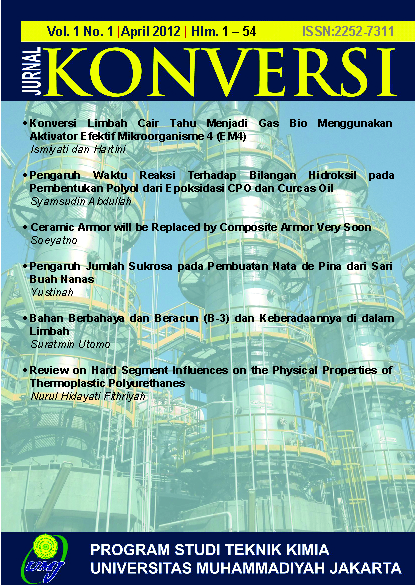CERAMIC ARMOR WILL BE REPLACED BY COMPOSITE ARMOR VERY SOON*
Main Article Content
Abstract
Ceramic armors have existed for more than 30 years. They replaced the much heavier metal armor.One of the biggest producers of ceramic armor is Bittosi in Spain. It is a confidential product with no open promotion. Ceramic armor is the side products of Bitossi. Their main products are alubit liming and balls for ceramic industry, paint and pharmacy. Their ceramic armors have been used by many countries in Europe and by NATO. Actually, ceramic armor is still too heavy for soldiers since itweighs approximately 8.6 kg depending on size, and is still too rigid. Therefore, people are still looking for more convenientmaterials, which is resistant to shooting, flexible, and lighter.The answer is composite productdeveloped by De Staat Mijn-DSM Research Campus Geleen of the Netherlands, specialist in polymer research. They have proved it very successfully in shooting test. It is flexible and weighs only about one third of ceramic armor. The composite is produced from 20 layers of 0.15 mm thickPE (Poly Ethylene) sheets,reinforced by carbon fibers. Since it is far better than ceramic armor, the composite armor will replace ceramic armor very soon. It is only a matter of time. Keywords:ceramic armor, composite
Article Details
Issue
Section
Articles
Authors who publish with this journal agree to the following terms:
- Authors retain copyright and grant the journal right of first publication with the work simultaneously licensed under a Creative Commons Attribution License that allows others to share the work with an acknowledgement of the work's authorship and initial publication in this journal.
- Authors are able to enter into separate, additional contractual arrangements for the non-exclusive distribution of the journal's published version of the work (e.g., post it to an institutional repository or publish it in a book), with an acknowledgement of its initial publication in this journal.
- Authors are permitted and encouraged to post their work online (e.g., in institutional repositories or on their website) prior to and during the submission process, as it can lead to productive exchanges, as well as earlier and greater citation of published work (See The Effect of Open Access).
